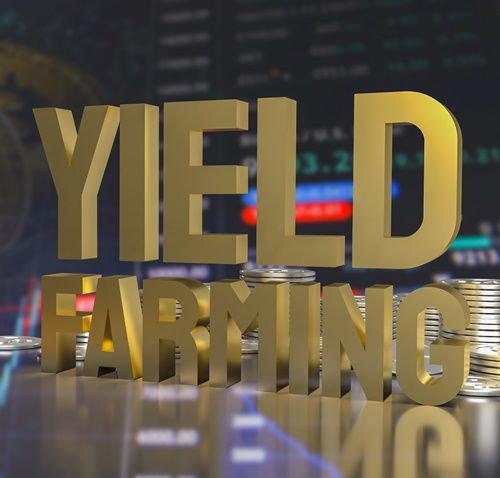What is yield farming? It is important to know the terms used in the field of DeFi, because they allow to better understand its functioning.
Yield farming is a type of decentralized finance (DeFi) activity where users lend or stake their assets in a protocol to earn interest or rewards. It is a protocol used in a lot of projects, that’s why you will often hear about it in the DeFi news.
The interest or rewards are generated by the protocol through various mechanisms, such as borrowing and lending, liquidity provision, or governance.
The yield or return on investment can be in the form of additional tokens or a percentage of the assets staked.
Yield farming has become popular as a way to earn high returns on cryptocurrency investments, but it also comes with significant risk as the value of the assets and the returns can be highly volatile.
Yield farming, exactly how it works:
Performance farming works by allowing users to lend or stake their assets in a protocol to earn interest or rewards. Interest or rewards are generated by the protocol through various mechanisms such as borrowing and lending, provision of money or governance.
Loans and Borrowings: Some performance agriculture protocols, such as Aave and Compound, allow users to lend their assets to other users in exchange for interest. Users can also borrow assets from the protocol, using their own assets as collateral.
Providing liquidity: Other yield farming protocols, such as Uniswap and Sushiswap, allow users to provide liquidity to the platform by depositing assets into a pool. In exchange for providing liquidity, users can earn a share of trading fees or rewards in the form of platform tokens.
Governance: Some performance farming protocols, such as MakerDAO and Yearn Finance, allow users to stake their tokens and participate in the governance of the protocol. In exchange, users can earn rewards in the form of additional tokens.
When participating in performance farming, users must deposit their assets into a smart contract on the blockchain. These assets are then used to generate returns through the various mechanisms mentioned above. Users can withdraw their assets at any time, but returns and asset values can be very volatile.
It is important to mention that return farming is a relatively new and complex field, and it is important to understand the mechanics of the specific protocol you are using, the associated risks, and how to mitigate them.
Almost every project in the world of DeFi needs it because it provides liquidity. This is important for a decentralized trading platform as well as for obtaining liquidity for any project that cannot and does not want to be funded by a bank.
Yield farming, here are some concrete examples of protocols that use it:
Aave: A decentralized lending platform that allows users to earn interest on their deposits by lending them out to other users.
Compound: A decentralized lending and borrowing platform that allows users to earn interest on their deposits by providing liquidity to the protocol, and borrow assets at a variable interest rate.
Uniswap: A decentralized exchange that allows users to earn rewards for providing liquidity to the platform in the form of UNI tokens.
MakerDAO: A decentralized lending platform that allows users to earn interest on their deposits by collateralizing them with cryptocurrency and borrowing DAI, a stablecoin pegged to the value of the US dollar.
Yearn Finance: A platform that allows users to deposit their assets into « vaults » which are then automatically invested in the highest yield opportunities across various other protocols.
Sushiswap: A decentralized exchange that allows users to earn rewards for providing liquidity to the platform in the form of SUSHI tokens.
These are just a few examples of yield farming protocols, there are many other similar platforms and the landscape is constantly evolving.
What are the advantages of using it?
The advantages of using yield farming protocols can include:
- High returns: Yield farming can offer high returns on investment, especially when compared to traditional savings accounts or fixed-income investments.
- Decentralization: Yield farming protocols are built on blockchain technology, which means they are decentralized and not controlled by any central authority. This can provide increased security and transparency for users.
- Accessibility: Yield farming protocols are accessible to anyone with an internet connection and a cryptocurrency wallet, making it possible for a wide range of individuals to participate in the market.
- Automation: Many yield farming protocols are automated and can automatically invest users’ assets into the highest yield opportunities, which can be more efficient than manual investment management.
- Experimentation: Yield farming protocols offer a new way to invest and experiment with different strategies to generate returns.
- Innovation: Yield farming is a rapidly evolving field, with new protocols and strategies emerging all the time, which can offer new opportunities for investment and growth.
However, it’s important to keep in mind that yield farming also comes with significant risks and it’s important to be aware of the risks and how to mitigate them.

